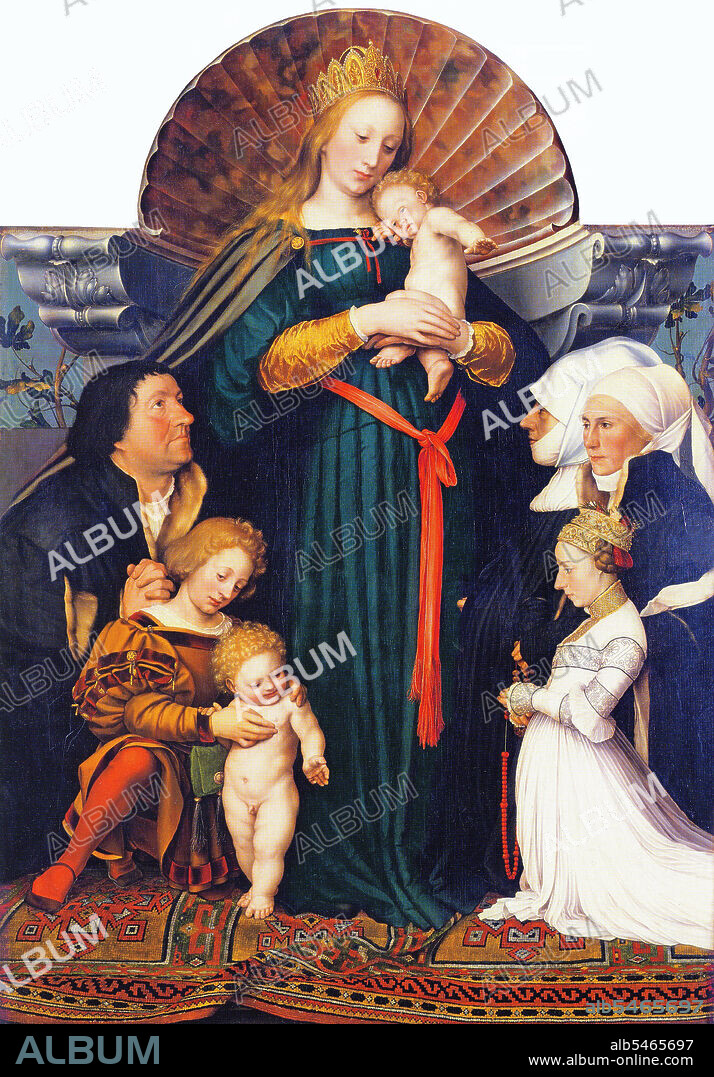alb5465697
The 'Darmstadt Madonna' adored on a fine oriental carpet, Hans Holbein the Younger, c. 1525.

|
Add to another lightbox |
|
Add to another lightbox |



Title:
The 'Darmstadt Madonna' adored on a fine oriental carpet, Hans Holbein the Younger, c. 1525.
Caption:
Oriental carpets more than two centuries old have rarely survived and are rarely represented in Islamic Art since Sunni Islam (and to a lesser extent Shia) eschews representational art in favour of precisely the repetetive geometric symbols and arabesques found, for example, in oriental carpets. This means that most examples of 17th century and earlier oriental carpets, mainly produced in Muslim lands, are only to be found in paintings from Christian lands where rich oriental carpets were associated with wealth, power and taste. Such carpets featured as an important decorative feature in paintings from the 14th century onwards, leading to the dichotomy that there are more depictions of oriental carpets produced before the 17th century in European paintings than there are actual oriental carpets surviving from the same period. Because of this European paintings have proved an invaluable source of reference for the study of the history of carpetmaking and carpets.
Credit:
Album / Pictures From History/Universal Images Group
Releases:
Model: No - Property: No
Rights questions?
Rights questions?
Image size:
3490 x 5008 px | 50.0 MB
Print size:
29.5 x 42.4 cm | 11.6 x 16.7 in (300 dpi)
Keywords:
ART • ARTS • ASIA • ASIAN • CARPET MAKING • CARPET • EUROPA • EUROPE • HISTORIA UNIVERSAL • HISTORIA • HISTORICAL • HISTORY • HOLBEIN CARPET • LEGEND • MAT • MIDDLE EAST • ORIENTAL CARPET • PAINT • PAINTING • RUG • WEAVING
 Pinterest
Pinterest Twitter
Twitter Facebook
Facebook Copy link
Copy link Email
Email

